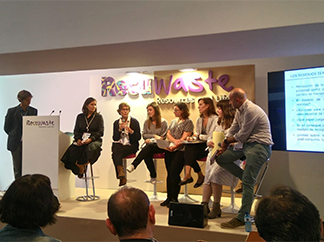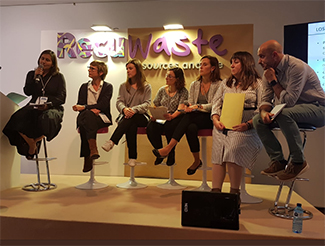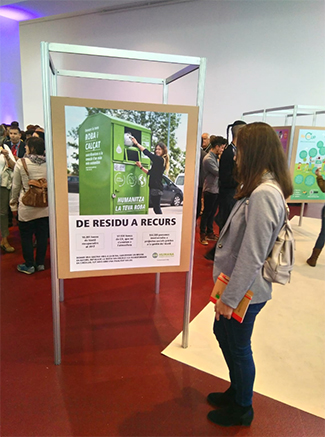consent_cookie
Duración: 1 year
Stores the user's cookie consent state
29-09-2018
The administration suffers from sufficient interest towards textile waste, the citizens are largely unaware of the benefits of proper management of used clothing and it is necessary to create a system in which public bodies, producers and social entities remen in the same sense.
On the other hand, the social impact generated by organizations such as Humana can not be compared with that derived from other fractions. These are the main conclusions of the debate that the Foundation organized yesterday in the framework of the RECUWASTE congress in the Tecnocampus of Mataró (Barcelona).
The round table generated "a very enriching conversation because it perfectly reflected the situation in which the textile sector in general, and the collection of used clothing in particular," explains Àgata Soler-Roig, responsible for the area of ??Human Collection in Catalonia . She has led the coordination of this meeting that brought together Pilar Chiva, director of the Circular Economy Area of ??the public agency Agència de Residus de Catalunya (ARC); Nati Yasares, environmental technician of Solidança-Roba Amiga; Nina Fábrega, responsible for Mango Sustainability; Mònica Olmos, Operations Director of Texfor; Marisa Álvarez, from the City Council of Sant Cugat (Barcelona); Josep Maria Gardell, environmental technician of the City Council of Vilassar de Dalt (Barcelona), and Jordi Costa, technical secretary of the Gremi de Recuperació de Catalunya, who served as moderator.
Strengths and weaknesses of the sector
The debate highlighted the strengths and weaknesses of the sector in Catalonia and, by extension, in Spain. It became clear that the local and supramunicipal administrations offer little information on textile waste, not only of the forms of collection to the citizenship but also of the subsequent treatment. On the other hand, some of the municipal technicians present at the event said that they do pedagogy of the importance of reusing and recycling waste, while recognizing their ignorance of what is done with the clothes that are collected in their locality.
During the debate, it was said that it is possible that information from textile waste management entities is lacking. "Neither a correct message is being given nor arrives to the citizenship," the participants insisted. At that time, the spokespersons of Humana and Roba Amiga took the opportunity to highlight the work of waste managers with a social purpose. Soler-Roig gave the example in this sense of our Awareness Program that annually involves 10,000 people.
"We must make an effort to communicate more and better," agreed Pilar Chiva, who pledged that the Agència de Residus de Catalunya promote meetings with municipal environmental managers and promote visits to the preparation plants for reuse, such as de l'Ametlla del Vallès (Barcelona) so that citizens know personally our work.
The unsustainable model of fast fashion
The participants of the debate, held in the first of the two days of this congress focused on the management of waste as the axis of the circular economy, reflected on the unsustainable model of consumption represented by fast fashion. The director of the ARC defined the big fashion brands as "locomotive companies". "If you improve the quality and recyclability of the garments, you will drag many others to do the same," he said addressing Mango. Its responsible for Sustainability, meanwhile, advanced that the sector is beginning to become aware of the infeasibility of current patterns of consumption and to investigate more sustainable materials. The firm has the Second Chances project to collect used clothing and footwear through containers located in some of its stores, introduced three years ago
At this point, both Humana and Roba Amiga agreed on one of the risks that derives from this unsustainable model: "If the quality of clothing continues to decline, it also reduces its capacity to be reused and, consequently, of our resources that ensure social projects ", conceded Àgata Soler-Roig.
A possible GIS in which social entities would have much to contribute
The debate also addressed the importance of having a comprehensive management system (GIS) such as the field of glass (Ecovidrio) or plastic (Ecoembes). A GIS would add more value to the recyclable part of the waste, currently estimated at 30%. "If someday a system of extended responsibility of the producer is imposed, we demand the experience and the added value that the social entities bring," the representatives of Humana and Roba Amiga added in unison, agreeing that "we must take our deep knowledge of the sector and the social impact of our activity ".


